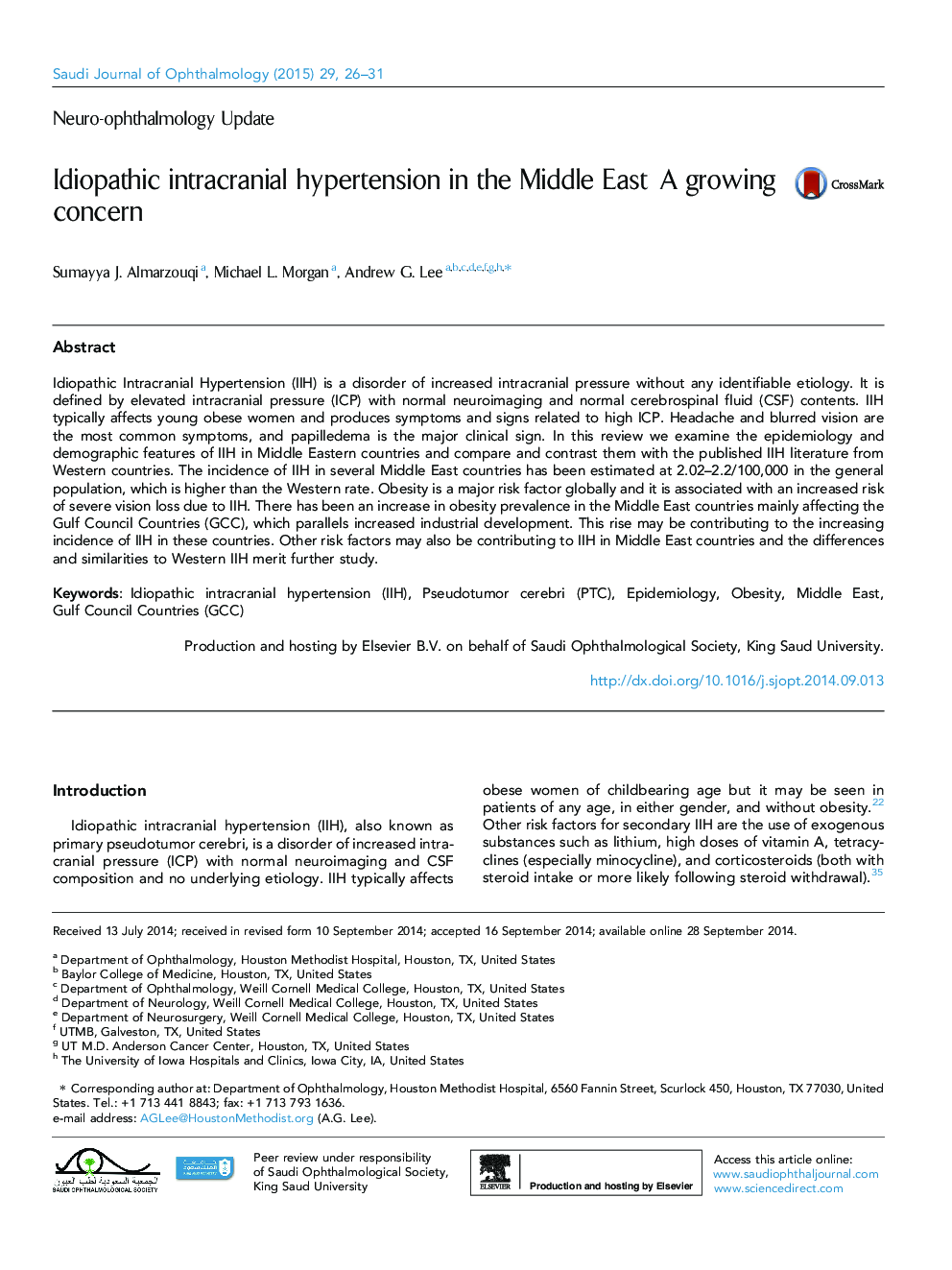| کد مقاله | کد نشریه | سال انتشار | مقاله انگلیسی | نسخه تمام متن |
|---|---|---|---|---|
| 2697890 | 1565139 | 2015 | 6 صفحه PDF | دانلود رایگان |
Idiopathic Intracranial Hypertension (IIH) is a disorder of increased intracranial pressure without any identifiable etiology. It is defined by elevated intracranial pressure (ICP) with normal neuroimaging and normal cerebrospinal fluid (CSF) contents. IIH typically affects young obese women and produces symptoms and signs related to high ICP. Headache and blurred vision are the most common symptoms, and papilledema is the major clinical sign. In this review we examine the epidemiology and demographic features of IIH in Middle Eastern countries and compare and contrast them with the published IIH literature from Western countries. The incidence of IIH in several Middle East countries has been estimated at 2.02–2.2/100,000 in the general population, which is higher than the Western rate. Obesity is a major risk factor globally and it is associated with an increased risk of severe vision loss due to IIH. There has been an increase in obesity prevalence in the Middle East countries mainly affecting the Gulf Council Countries (GCC), which parallels increased industrial development. This rise may be contributing to the increasing incidence of IIH in these countries. Other risk factors may also be contributing to IIH in Middle East countries and the differences and similarities to Western IIH merit further study.
Journal: Saudi Journal of Ophthalmology - Volume 29, Issue 1, January–March 2015, Pages 26–31
